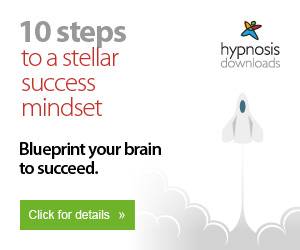Setting self improvement goals is crucial for personal growth and achieving success. By investing in yourself and setting clear and measurable goals, you can unlock your potential and reach new heights in various areas of your life.
Reframing these goals as personal growth can help align your personal and professional lives. It is important to set achievable goals that force you to step out of your comfort zone and develop new skills.
Putting in effort, cultivating good habits, and staying focused are key to achieving personal goals.
Key Takeaways:
- Setting self improvement goals is essential for personal growth and success.
- Investing in yourself and setting clear, measurable goals can help unlock your potential.
- Aligning personal and professional goals can lead to a more balanced and fulfilling life.
- Stepping out of your comfort zone and developing new skills is vital for growth.
- Effort, good habits, and focus are key to achieving personal goals.
What are personal goals?
Personal goals are the driving force behind self-improvement and personal growth.
These goals are specific objectives that you set for yourself in various areas of your life, such as your career, fitness, relationships, and personal development.
Unlike external benchmarks or competition with others, personal goals are unique to you and reflect your individual desires and aspirations.
Personal goals can be both short-term and long-term, providing direction and purpose in your life.
Short-term goals are those that you aim to achieve in the near future, while long-term goals are broader aspirations that you work towards over an extended period.
Short-term goals help you stay motivated and make progress towards your long-term objectives.
When setting personal goals, it is important to make them specific and achievable.
A specific goal provides clarity and helps you create a clear plan of action. By breaking down your goals into smaller, manageable steps, you can track your progress and stay focused along the way.
Additionally, setting achievable goals ensures that you maintain a sense of self-efficacy and prevents you from feeling overwhelmed or discouraged.
Types of Personal Goals
| Type of Goal | Description |
|---|---|
| Career Milestones | Achieving specific accomplishments or advancements in your professional life. |
| Morning Run Time | Improving your fitness and setting a goal for your morning run time. |
| Short-term Goals | Goals that you want to achieve in the near future, within a few weeks or months. |
| Long-term Goals | Broad aspirations that you work towards over an extended period, typically years. |
Setting personal goals is a powerful tool for self-improvement and personal growth. It gives you focus, motivation, and a sense of purpose in various areas of your life.
By setting specific and achievable goals, you can take control of your own development and unlock your full potential.
5 Areas for Self-Improvement
Self-improvement encompasses various areas of life that contribute to your overall well-being and personal growth.
By focusing on these areas, you can enhance your emotional and physical well-being, develop positive personal characteristics, cultivate healthy social relationships, and achieve professional and personal achievements.
Here are the five key areas for self-improvement:
1. Emotional Well-being
Your emotional well-being plays a vital role in your overall happiness and success.
Taking steps to improve your emotional well-being involves developing self-awareness, managing stress effectively, practicing mindfulness, and cultivating positive thoughts and emotions.
By enhancing your emotional intelligence and resilience, you can navigate life’s challenges with greater ease and maintain a positive outlook.
2. Physical Well-being
Physical well-being is crucial for leading a healthy and fulfilling life. This area of self-improvement focuses on maintaining a balanced diet, engaging in regular exercise, getting enough sleep, and taking care of your overall physical health.
By prioritizing your physical well-being, you can boost your energy levels, improve your mood, reduce the risk of illnesses, and increase your overall quality of life.
3. Personal Characteristics
Your personal characteristics, such as your attitude, mindset, and values, shape who you are as an individual.
Engaging in self-improvement in this area involves working on developing positive character traits such as resilience, self-confidence, patience, gratitude, and empathy.
By consciously cultivating these traits, you can enhance your personal growth and become the best version of yourself.
4. Social Health
Developing and maintaining healthy social relationships is essential for your overall well-being.
This area of self-improvement focuses on developing effective communication skills, building strong connections, fostering meaningful friendships, and nurturing positive relationships with your family, friends, and colleagues.
By investing in your social health, you can experience greater happiness, support, and a sense of belonging.
5. Professional and Personal Achievements
Self-improvement in the context of professional and personal achievements involves setting goals, seeking personal growth opportunities, and continuously learning and developing new skills.
By setting ambitious yet achievable goals, honing your skills, and embracing opportunities for growth, you can progress in your career and personal endeavors, ultimately achieving the success and fulfillment you desire.
By focusing on these five areas for self-improvement, you can embark on a journey of personal growth and transformation.
Remember that self-improvement is a lifelong process, and the key is to take consistent action, stay open to learning, and embrace challenges as opportunities for growth.
16 Examples of Personal Goals
Setting personal goals is an important step towards self-improvement and personal growth. By defining clear objectives for yourself, you can enhance various aspects of your life and achieve a sense of fulfillment.
Here are 16 examples of personal goals that you can consider:
- Improve time management skills to enhance productivity and efficiency.
- Overcome procrastination habits by setting deadlines and prioritizing tasks.
- Reduce social media usage to regain focus and create more meaningful connections.
- Incorporate self-care practices into daily routines to prioritize mental and physical well-being.
- Develop public speaking skills to boost self-confidence and effective communication.
- Improve physical health through regular exercise and a balanced diet.
- Cultivate the habit of living in the present moment to enhance mindfulness and reduce stress.
- Achieve a healthy work-life balance by setting boundaries and prioritizing self-care.
- Build self-confidence by stepping out of your comfort zone and embracing new challenges.
- Learn assertive communication techniques to express thoughts and feelings effectively.
- Practice active listening skills to foster meaningful connections and understanding.
- Develop the habit of waking up earlier to maximize productivity and start the day with intention.
- Enhance emotional intelligence to better understand and manage emotions.
- Develop leadership skills to inspire and motivate others towards a common goal.
- Expand your network by actively seeking opportunities to connect with like-minded individuals.
Remember, personal goals are unique to each individual, so choose those that resonate with you and align with your values and aspirations. These examples can serve as inspiration and a starting point for your personal development journey.

Table: Comparing Personal Goals
| Personal Goals | Time Management | Procrastination | Social Media Usage | Self-Care Practices | Public Speaking | Physical Health |
|---|---|---|---|---|---|---|
| Definition | Managing time effectively to optimize productivity and achieve goals. | Overcoming the habit of delaying or postponing tasks. | Reducing excessive use of social media platforms for better focus and connection. | Prioritizing activities that promote mental and physical well-being. | Developing the ability to speak confidently and effectively in front of an audience. | Maintaining good physical fitness and overall health through exercise and proper nutrition. |
| Benefits | Increased productivity, reduced stress, and improved work-life balance. | Improved time management, increased efficiency, and reduced stress. | Enhanced focus, deeper connections with others, and improved well-being. | Better mental and physical health, increased energy, and improved self-esteem. | Boosted self-confidence, improved communication skills, and expanded opportunities. | Improved physical fitness, increased energy levels, and reduced risk of illnesses. |
In addition to the goals listed above, remember to set goals that align with your specific needs and aspirations.
Whether it’s aiming to achieve work-life balance, improving self-confidence, or developing leadership skills, setting personal goals is an empowering step towards self-improvement and personal growth.
6 Examples of Personal Development Goals for Work
Setting personal development goals specifically aimed at work can greatly enhance your professional growth and career advancement.
By focusing on areas of improvement within your work environment, you can boost your skills, knowledge, and overall performance.
Here are six examples of personal development goals for the workplace:
1. Learning New Things
Make a commitment to continuously expand your knowledge and skills by seeking out new learning opportunities. This could involve attending industry conferences, taking online courses, or participating in workshops relevant to your field.
By constantly learning and staying up-to-date with the latest trends and advancements, you can position yourself as a valuable asset in your workplace.
2. Networking
Build and nurture professional relationships both within and outside your organization. Actively engage in networking events, connect with colleagues on professional networking platforms, and seek opportunities to collaborate with others.
Building a strong professional network can open doors to new career opportunities, provide valuable insights, and foster professional growth.
3. Resiliency
Developing resilience is crucial in today’s fast-paced work environment. Set a goal to enhance your ability to adapt to challenges, setbacks, and changes in the workplace.
This could involve seeking feedback, learning from failures, and developing a growth mindset that embraces change as an opportunity for personal and professional development.
4. Finding Your Niche
Identify and cultivate your unique strengths and talents within your area of work. Set a goal to become a recognized expert or go-to person in a specific niche or skill set.
This can involve honing specific technical or soft skills, taking on specialized projects, or seeking out mentorship opportunities to accelerate your growth and expertise in that area.
5. Effective Communication
Communication is a vital skill in any workplace. Set a goal to improve your communication skills, both verbal and written.
This could include seeking feedback on your communication style, actively listening to others, and practicing clear and concise communication. Effective communication can enhance collaboration, teamwork, and overall productivity in the workplace.
6. Teamwork
Collaboration and teamwork are essential for success in most workplace environments. Set a goal to improve your ability to work effectively with others.
This could involve seeking out opportunities to lead team projects, actively participating in team discussions, and demonstrating flexibility and adaptability in working with diverse personalities and work styles.
By setting personal development goals for work, you can proactively invest in your professional growth and create a path for continued success in your career.
6 Tips for Setting Personal Development Goals at Work
Setting personal development goals at work is essential for your professional growth and career advancement. It allows you to continually improve your skills, expand your knowledge, and achieve success in your chosen field.
Here are six tips to help you set and achieve personal development goals at work:
1. Visualization
Take a moment to visualize where you want to be in your career. Envision yourself achieving your goals and imagine the skills and capabilities you will have acquired. This visualization exercise will help you clarify your goals and provide you with the motivation to work towards them.
2. Clear Plan of Action
Create a clear and detailed plan of action to achieve your goals. Break down your goals into smaller, achievable steps and create a timeline for each step. Having a clear plan will help you stay organized, focused, and committed to your goals.
3. SMART Goals
Set SMART goals – Specific, Measurable, Achievable, Relevant, and Time-bound.
Specific goals clearly define what you want to achieve, measurable goals allow you to track your progress, achievable goals are realistic and attainable, relevant goals align with your career objectives, and time-bound goals have a clear deadline.
Setting SMART goals will increase your chances of success.
4. Progress Evaluation
Regularly evaluate your progress towards your personal development goals. Assess your achievements, identify areas for improvement, and make necessary adjustments to your action plan.
By monitoring your progress, you can stay on track and make sure you are moving in the right direction.
5. Realistic Timeline
Set a realistic timeline for achieving your personal development goals. Break down your goals into short-term and long-term milestones, and allocate sufficient time for each milestone.
Be mindful of your other work commitments and create a timeline that is feasible and manageable.
6. Failure Acceptance
Understand that setbacks and failures are a part of the learning process. Embrace failure as an opportunity to grow, learn, and improve. Use setbacks as motivation to work harder and make necessary adjustments.
Accepting failure and learning from it will make you more resilient and better equipped to achieve your personal development goals.
6 Benefits of Setting Goals for Self-Improvement
Setting goals for self-improvement offers numerous benefits for personal growth and success.
Whether you’re aiming to enhance your skills, improve your well-being, or achieve specific milestones, here are six advantages of setting and working towards self-improvement goals:
1. Self-Motivation
Setting goals provides you with a sense of direction and purpose. By defining what you want to achieve, you tap into your inherent motivation.
When you have a clear target in mind, you’re more likely to stay focused, overcome obstacles, and work consistently towards your self-improvement goals.
2. Sense of Purpose
Having goals gives your actions meaning and helps you connect with your deeper purpose. It allows you to align your actions with your values, making you feel more fulfilled and satisfied.
When you have a sense of purpose, you’re more likely to be driven, resilient, and committed to personal growth.
| 3. Growth Mindset | 4. Self-Awareness | 5. Work Ethic |
|---|---|---|
| Setting goals fosters a growth mindset, enabling you to embrace challenges and see setbacks as opportunities for learning and improvement. | By setting goals, you gain a deeper understanding of your strengths, weaknesses, and areas for development. | Goal setting instills a strong work ethic, encouraging discipline, perseverance, and a commitment to continuous improvement. |
“Setting goals is the first step in turning the invisible into the visible.” – Tony Robbins
6. Accountability and Progress
Setting goals helps you hold yourself accountable for your actions. It provides a framework for tracking your progress and evaluating your performance.
With clear goals, you can see how far you’ve come and make adjustments if needed, ensuring you stay on the path to self-improvement.
By setting meaningful and achievable self-improvement goals, you can unleash your potential, cultivate a growth mindset, and work towards becoming the best version of yourself.
The Importance of Clarity in Goal-Setting
When it comes to goal-setting, clarity is the key ingredient that can propel you towards success. Clear and well-defined goals provide you with a roadmap and a sense of direction.
They help you visualize the desired results you want to achieve and set the foundation for your action plan. Without clarity, your goals can become vague and ambiguous, making it difficult to stay focused and motivated.
Being specific about what you want to achieve is crucial in goal-setting. Ask yourself the who, what, where, when, which, and why of your goal.
For example, instead of setting a goal to “exercise more,” be specific by setting a goal to “go for a 30-minute morning run three times a week.”
This level of clarity not only helps you stay on track but also allows you to measure your progress and make necessary adjustments along the way.
“Clarity is a crucial aspect of effective goal-setting. Clear and well-defined goals help you have a clear vision of the desired results you want to achieve.”
Clarity in goal-setting also helps you overcome obstacles and stay motivated. When facing challenges or distractions, having a crystal-clear vision of your desired results can be a powerful source of inspiration.
It reminds you of why you set the goal in the first place and helps you stay committed to your journey of personal growth and self-improvement.
So, when you embark on the journey of goal-setting, remember the importance of clarity. Be specific about what you want to achieve, set clear milestones, and visualize the desired outcome.
With clarity as your guiding star, you can confidently pursue your goals and transform your aspirations into reality.
Types of Goals and Goal-Setting Theory
When it comes to setting goals, there are various types that you can consider.
These include short-term goals, which are focused on achieving results within a relatively short period of time, and long-term goals, which are larger-scale objectives that may take months or even years to accomplish.
Personal goals are those that are centered around your individual growth and well-being, while professional goals encompass your career aspirations and achievements.
Financial goals pertain to your financial stability and success, while academic goals focus on your educational pursuits and accomplishments. Lastly, social goals involve enhancing and nurturing your relationships and social connections.
Goal-setting theory, developed by Dr. Edwin A. Locke, provides valuable insights into the process and effectiveness of setting goals. This theory emphasizes the importance of setting clear, specific, and challenging goals that are monitored regularly.
By setting these types of goals, individuals are more likely to experience increased motivation, performance, and persistence.
The theory also underscores the importance of setting goals that align with one’s values and aspirations, as this can enhance commitment and drive towards achieving them.
It is worth noting that the types of goals mentioned above are not mutually exclusive. In fact, individuals may find success by setting goals that span multiple categories, as they often interconnect and influence one another.
For example, personal and professional goals may overlap when an individual seeks to enhance their skills and knowledge to advance in their career while also improving their overall well-being.
| Goal Type | Description |
|---|---|
| Short-term goals | Goals focused on achieving results within a relatively short period of time. |
| Long-term goals | Larger-scale objectives that may take months or years to accomplish. |
| Personal goals | Goals centered around individual growth and well-being. |
| Professional goals | Goals related to career aspirations and achievements. |
| Financial goals | Goals pertaining to financial stability and success. |
| Academic goals | Goals focused on educational pursuits and accomplishments. |
| Social goals | Goals involving enhancing and nurturing relationships and social connections. |
By understanding the different types of goals and utilizing goal-setting theory, you can effectively plan and strive towards your desired outcomes in various aspects of your life.
Whether you are aiming for personal growth, professional success, financial stability, academic achievements, or improved social relationships, setting clear and challenging goals can provide the motivation and direction needed to achieve them.
Tips for Setting and Achieving Personal Development Goals

Setting and achieving personal development goals requires more than just willpower. It involves motivation, monitoring behavior, and having a plan in place.
SMART goals (Specific, Measurable, Achievable, Relevant, and Timely) provide a framework for effective goal-setting. It is also important to find your purpose or why behind your goals to stay motivated.
Monitoring your progress, seeking support, and rewarding yourself along the way are additional strategies for achieving personal development goals.
1. Stay Motivated
Personal development goals require long-term commitment, and staying motivated throughout the journey is crucial.
Find ways to keep your motivation high by reminding yourself of the benefits and positive impact achieving these goals will have on your life. Visualize your success and imagine how it will feel to accomplish your goals.
2. Monitor Your Behavior
Regularly monitoring your behavior and progress is essential for staying on track. Keep a journal or use a tracking app to record your actions and assess whether they align with your goals.
Reflect on your habits, identify areas for improvement, and make adjustments as necessary.
3. Set SMART Goals
Use the SMART framework to set clear and specific goals that are achievable and relevant to your personal development. Break down your larger goals into smaller, manageable steps that can be measured and tracked.
This will make it easier to stay focused and motivated throughout the process.
4. Find Your Purpose
Understanding the underlying purpose or why behind your goals can provide a sense of direction and motivation. Reflect on your values, passions, and aspirations to identify the deeper meaning behind your personal development goals.
This will help you stay committed and connected to the journey.
5. Monitor Progress and Seek Support
Regularly evaluate your progress and celebrate your achievements along the way. Acknowledge the milestones you’ve reached and appreciate the effort you’ve put into your personal development.
Additionally, seek support from friends, family, or a mentor who can provide guidance and encouragement throughout your journey.
6. Reward Yourself
As you make progress towards your personal development goals, reward yourself for your achievements. Treat yourself to something you enjoy or celebrate with a small, meaningful reward.
This positive reinforcement can help boost your motivation and make the journey towards personal growth more enjoyable.
By following these tips, you’ll be well-equipped to set and achieve your personal development goals.
Remember that personal growth is a continuous journey, and it’s important to stay committed, monitor your progress, and adjust your goals as needed.
With the right mindset and strategies in place, you can unlock your full potential and create a fulfilling life.
Strategies for Successful Goal-Setting in Therapy
When it comes to goal-setting in therapy, there are several strategies that can help you achieve meaningful outcomes.
By incorporating your passions and interests, engaging in self-reflection, committing to your goals, and planning for success, you can make the most of your therapeutic journey.
Here are some strategies to consider:
Finding Your Passions and Interests
One of the key aspects of successful goal-setting in therapy is aligning your goals with your passions and interests. By focusing on areas that you genuinely care about, you’ll be more motivated and engaged in the therapeutic process.
Take the time to explore your interests and identify what truly drives you. This will provide you with a strong foundation for setting meaningful goals that are in line with your values.
Engaging in Self-Reflection
Self-reflection is an important component of effective goal-setting in therapy. Take the time to reflect on your current situation, strengths, and areas for improvement.
Consider what you hope to achieve and why it is important to you.
This self-reflection will help you gain clarity and develop a deeper understanding of yourself, enabling you to set goals that are meaningful and relevant to your personal growth.
Commitment and Planning
Commitment and planning play a crucial role in successful goal-setting in therapy. Once you have identified your goals, make a commitment to yourself and your therapist to actively work towards them.
This requires dedication and perseverance, even when faced with challenges or setbacks. Develop a clear plan of action, breaking down your goals into smaller, manageable steps.
This will help you stay on track and make progress towards your desired outcomes.
Self-Motivation and Flexibility
Self-motivation is essential for successful goal-setting in therapy.
Tap into your inner drive and remind yourself of the reasons why you embarked on this journey. Celebrate your achievements along the way and keep yourself motivated with positive affirmations and rewards.
Additionally, be open to adjusting your goals as needed. Flexibility is key in therapy, as circumstances and priorities may change.
Embrace new opportunities for growth and be willing to adapt your goals to ensure they remain relevant and meaningful to you.
Conclusion
Setting self improvement goals is an essential step towards personal growth and achieving success.
By identifying areas for improvement and setting clear objectives, you can unlock your potential and reach new heights in all aspects of your life.
Effective goal-setting strategies, such as setting specific goals using the SMART framework, finding your purpose, and regularly evaluating and adjusting your goals, are key to staying on track and achieving your desired outcomes.
Personal growth is a lifelong journey that requires self-reflection, motivation, and flexibility.
By investing in yourself and committing to your goals, you can develop new skills, enhance your confidence, and improve your overall well-being. Remember to focus on the process rather than just the end result, as personal growth is not always linear.
Celebrate your progress along the way and learn from any setbacks you encounter.
Success is not defined by reaching a specific destination, but rather by the continuous pursuit of personal growth.
By embracing effective goal-setting strategies and adopting a growth mindset, you can create a roadmap for success and discover your true potential.
Remember, you have the power to shape your own future and achieve greatness. Start setting self improvement goals today and embark on a journey of personal growth and fulfillment.
FAQ
What are personal goals?
Personal goals are specific objectives that you set for yourself in various areas of life, such as career milestones or improving fitness levels. They are individual to you and not based on competition with others.
What areas can I focus on for self-improvement?
Self-improvement can encompass various areas of life, including emotional well-being, physical health, personal characteristics, social relationships, and professional and personal achievements.
Can you give me examples of personal goals?
Examples of personal development goals include time management, overcoming procrastination, reducing social media usage, practicing self-care, improving public speaking skills, enhancing physical health, living in the present moment, achieving work-life balance, building self-confidence, practicing assertive communication, becoming a better listener, waking up earlier, developing emotional intelligence, improving leadership skills, and networking.
What are some personal development goals I can set for work?
Personal development goals for the workplace can include learning new things, expanding your professional network, building resiliency, finding your niche or passion, improving communication skills, and fostering effective teamwork.
How can I set personal development goals at work?
You can set personal development goals at work by visualizing your desired outcomes, creating a clear plan of action, setting SMART goals (Specific, Measurable, Achievable, Relevant, and Timely), regularly evaluating your progress, establishing a realistic timeline, and accepting failure as part of the learning process.
What are the benefits of setting goals for self-improvement?
Setting goals for self-improvement can provide motivation, a sense of purpose, a growth mindset, self-awareness, improved work ethic, and overall personal growth and success.
How important is clarity in goal-setting?
Clarity is crucial in goal-setting, as it helps you have a clear vision of the results you want to achieve. Being specific about your goals allows you to stay focused, track your progress, and make necessary adjustments along the way.
What are the different types of goals and goal-setting theory?
Goals can be short-term or long-term, and they can be personal, professional, financial, academic, or social in nature.
Goal-setting theory emphasizes the importance of setting clear and challenging goals that are monitored regularly, as this leads to increased motivation, performance, and persistence.
How can I effectively set and achieve personal development goals?
Effective goal-setting strategies include finding your purpose or why behind your goals, monitoring your behavior, having a plan in place, setting SMART goals, staying motivated, seeking support, rewarding yourself, and regularly reviewing and reassessing your goals.
What are the key strategies for successful goal-setting in therapy?
When setting goals in therapy, it is important to consider your passions and interests, engage in self-reflection, commit to the process, plan your actions, stay self-motivated, be flexible, avoid negative language, focus on the process, and regularly review and reassess your goals.
How can setting self-improvement goals lead to personal growth and success?
By following effective goal-setting strategies, such as setting clear and specific goals, using the SMART framework, finding your purpose, and regularly evaluating and adjusting your goals, you can create a roadmap for personal development and unlock your potential in all areas of your life.









